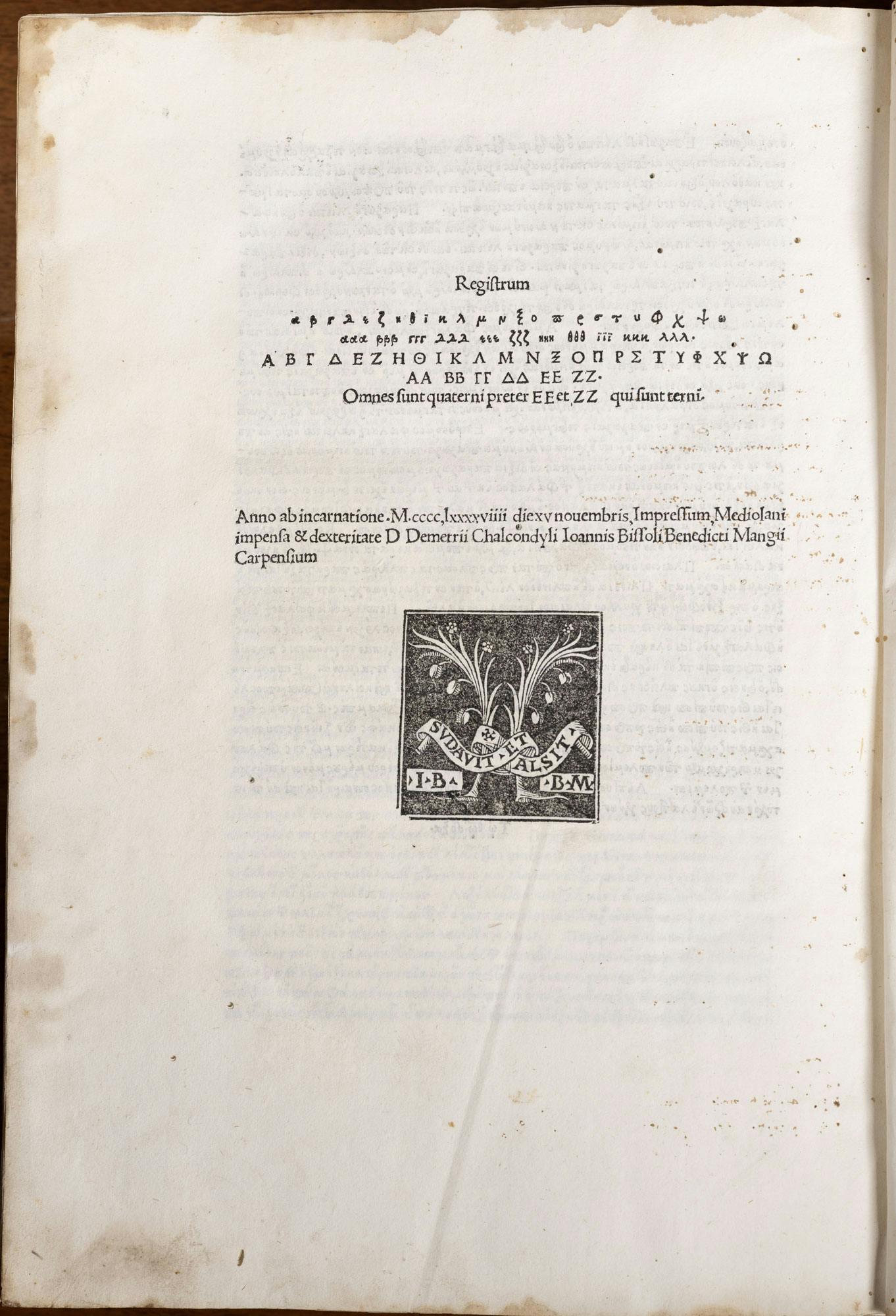Fascicolus temporum
Werner Rolevick (Laer 1425 - Cologne 1502)
The Carthusian monk Werner Rolevink, who entered the Carthusian monastery of St. Barbara in Cologne as a young man, was a prolific writer with a production of about 50 historical and theological books intended for his brethren. His fame was inextricably linked to the Fasciculus temporum, a mighty compendium of universal history from the Creation of the World to the Pontificate of Sixtus IV. The original work, in Latin, was published in many editions between 1474 and 1726 and translated into the main European languages (German, French and Flemish), thus proving to be a true best seller. It was reprinted almost forty times while the monk was still alive, and was most likely the best-selling printed book made by a living author in the 15th century.
The early print of the work preserved in the Uffizi Library, as stated in the wording of the colophon, was printed in Venice in 1480 by the printer Erhard Ratdolt, at the behest of Doge Giovanni Mocenigo. While leafing through the copy, it is possible to sense the fortune of this famous universal history that was appreciated for its exceptional iconographic material, enriched with valuable woodcuts (Noah's Ark, the Tower of Babel, views of cities, maps of the ancient world, etc.) and divided in six parts according to the Augustinian philosophy of the six ages of man. The page layout was truly innovative and avant-garde for the time: many pages feature a double line in the centre that separates biblical and secular story. Near the strip, some circles contain the names of biblical and historical characters. In the history of books, this work was certainly one of the first cases in which the layout was the result of a fruitful collaboration between author and printer. The origin of the volume, which was first documented in the Uffizi during the Inventory of the Gallery of Statues in 1825, is unknown.
A. Josephson, Fasciculus temporum in American libraries, The papers of the Bibliographical Society of America, 1917, pp, 1-14, pp.61-65;V. Moscrip, Werner Rolenvick’s Fasciculus temporum, University of Rochester Library Bulletin, Vol. IX, n.3, 1954;
https://openbook.lib.utah.edu/book-of-the-week-fasciculus-temporum/
